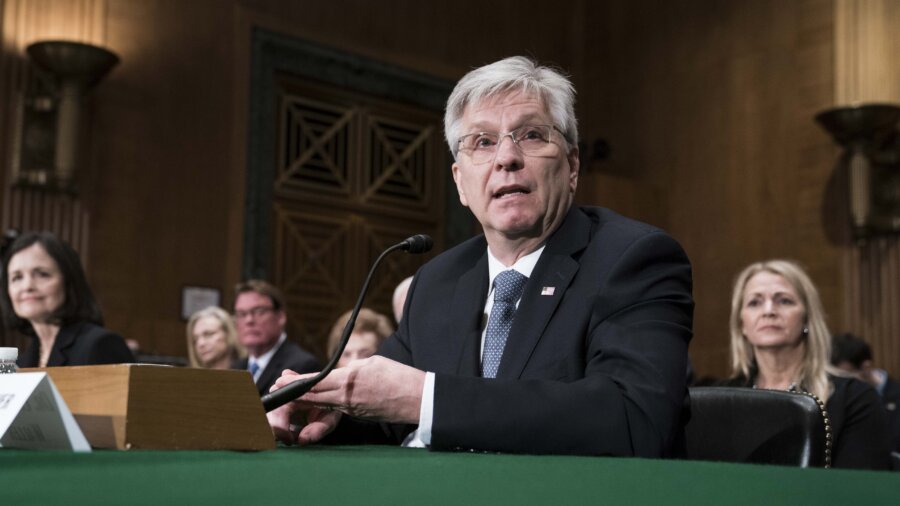The Federal Reserve should carefully consider future interest rate reductions given that the U.S. economy is showing signs of strength, according to Christopher J. Waller, member of the bank’s board of governors.
Last month, the Fed cut interest rates by 50 basis points, pushing it down to a range of between 4.75 percent and 5 percent. Officials expect to implement an additional 50-point cut this year. During an Oct. 14 Federal Open Market Committee conference, Waller pointed out that recent economic data have exceeded expectations.
“Most recently, we have seen upward revisions to GDI, an increase in job vacancies, high GDP growth forecasts, a strong jobs report, and a hotter-than-expected CPI report. This data is signaling that the economy may not be slowing as much as desired,” Waller said. “While we do not want to overreact to this data or look through it, I view the totality of the data as saying monetary policy should proceed with more caution on the pace of rate cuts than was needed at the September meeting.”
Earlier this month, the Bureau of Labor Statistics said that 254,000 new jobs were added in September. This was much higher than the market consensus estimate of 140,000 additions. It was also a big jump from the 159,000 new positions added in August. The unemployment rate registered a decline, from 4.2 percent to 4.1 percent.
Last week, data showed that the annual inflation rate for September was at 2.4 percent, above the 2.3 percent market estimate.
Waller said that while there has been a “lot of progress” in controlling inflation over the past 1 1/2 years, “that progress has clearly been uneven.”
“At times, it feels like being on a rollercoaster,” he said.
“Whether or not this month’s inflation reading is just noise or if it signals ongoing increases, is yet to be seen.”
In late September, the Bureau of Economic Analysis estimated the real GDP growth rate of the United States to be 3 percent for the second quarter. This was higher than the 2.8 percent jump expected by economists. The agency also revised up first-quarter GDP from 1.4 percent to 1.6 percent.
Waller clarified that his baseline still calls for cutting down the interest rate “gradually over the next year” irrespective of what happens in the near term.
“The median rate for [Federal Open Market Committee] participants at the end of 2025 is 3.4 percent, so most of my colleagues likewise expect to reduce policy over the next year,” he said. “There is less certainty about the final destination.”
Rate Cut Policies
During the September Federal Open Market Committee (FOMC) meeting, participants noted that inflation was moving toward the Fed’s 2 percent goal but remained “somewhat elevated,” according to minutes of the event.
A “substantial majority” supported reducing the interest rate by 50 points, noting that the move would help maintain the strength of the economy and labor market while continuing to pressure inflation downward. Others suggested a 25-point cut.
“Some participants emphasized that reducing policy restraint too late or too little could risk unduly weakening economic activity and employment. A few participants highlighted in particular the costs and challenges of addressing such a weakening once it is fully underway,” the minutes stated.
“Several participants remarked that reducing policy restraint too soon or too much could risk a stalling or a reversal of the progress on inflation.”
In an Oct. 4 post on social media platform X, economist Lawrence Summers pointed to the recent employment report to claim that the United States is in a “neutral rate environment” where officials must exercise caution when reducing interest rates.
“With the benefit of hindsight, the 50 basis point cut in September was a mistake, though not one of great consequence. With this data, ‘no landing’ as well as ‘hard landing’ is a risk the @federalreserve has to reckon with,” he said.
The upcoming FOMC meeting is scheduled for Nov. 6–7. A majority of interest rate traders are expecting a 25-point cut to be announced at the meeting, according to data from the CME FedWatch tool.
From The Epoch Times

